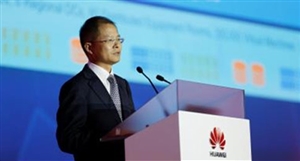Launches future-oriented SD-DC² architecture, innovative cloud OS and converged storage system
Huawei underscored its ambition to maximize value for customers by simplifying IT systems and making businesses agile with more open, converged, and innovative technologies, at the Huawei Cloud Congress (HCC) 2014.
At the annual event, Huawei will launch a series of innovative IT solutions – including data centers, converged storage, cloud operating systems (OS) and Big Data analytics platforms – that bring to life Huawei’s vision to “Make IT Simple, Make Business Agile.”
HCC gathers over 10,000 customers, partners and industry professionals from more than 80 countries and regions around the world to share insights and promote dialogue on industry trends and topics around cloud computing and Big Data. Participants at the two-day event will hear from 66 of Huawei’s partners and industry leaders across the ecosystem, including Intel, Seagate and SAP.
“Huawei aims to become an IT vendor recognized by enterprises and telecom operators for our innovative, differentiated and industry-leading products and solutions,” said Eric Xu, Rotating CEO of Huawei. “The products and solutions that Huawei is showcasing at HCC this year are all based on our commitment to provide customers with open, converged and innovative technologies that enable them to simplify their traditional IT infrastructure, improve business agility and create greater value.”
One of the flagship solutions to be unveiled at HCC 2014 is Huawei’s future-oriented Service Driven-Distributed Cloud Data Center (SD-DC²). Embodying innovations in cloud, Big Data and data management, this new generation data center helps enterprises build service-driven IT infrastructure that features key capabilities such as service awareness, business intelligence and unified management.
In his keynote speech, Zheng Yelai, President of Huawei’s IT Product Line, said, “Rapid developments in the digital world are redefining information technology. We will see increasing mobility-based data consumption, Internet of Things (IoT)-based data collection, Big Data-based data analytics, and cloud-based data sharing in the near future.”


